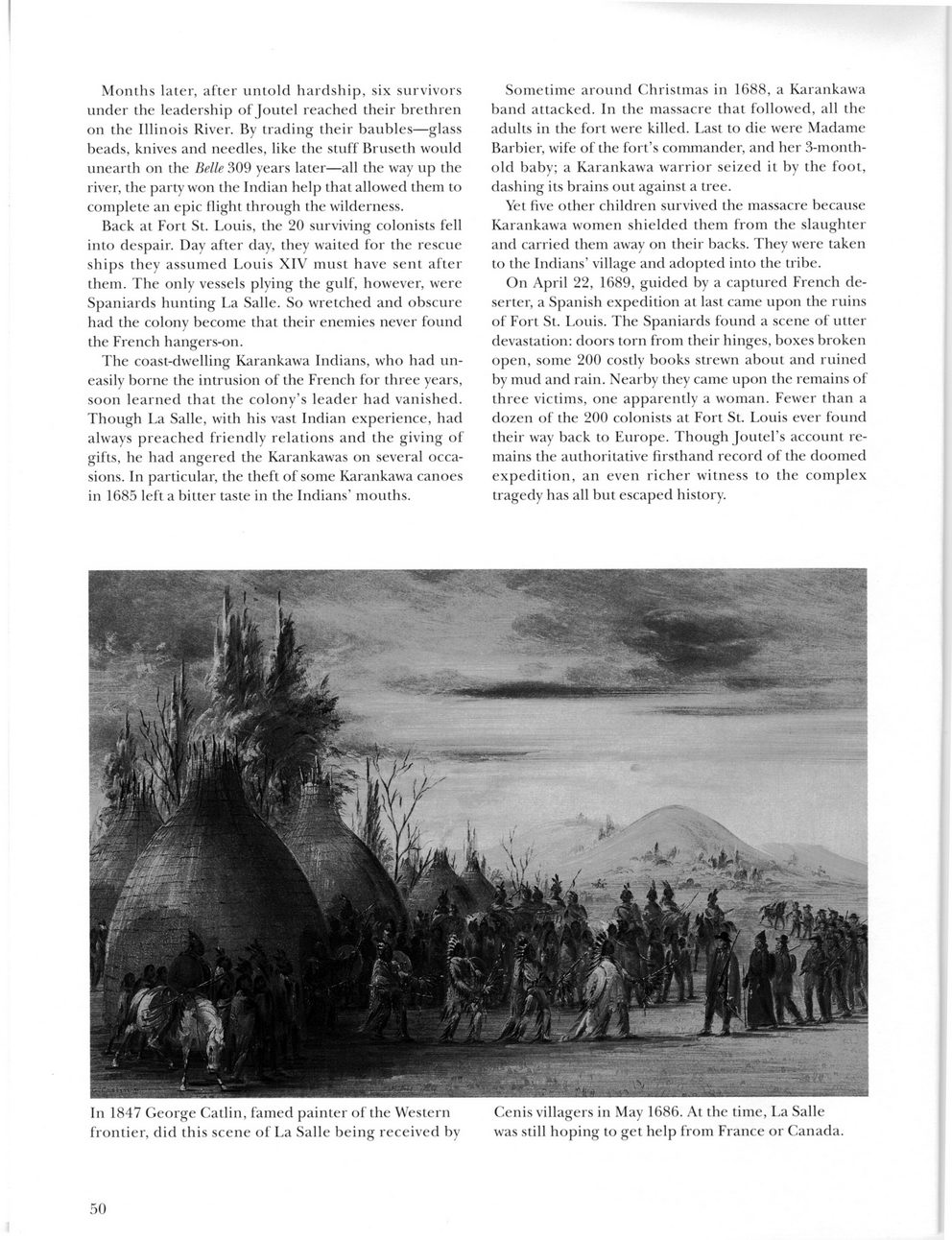This text was obtained via automated optical character recognition.
It has not been edited and may therefore contain several errors.
Months later, after untold hardship, six survivors under the leadership of Joutel reached their brethren on the Illinois River. By trading their baubles?glass beads, knives and needles, like the stuff Bruseth would unearth on the Belle 309 years later?all the way up the river, the party won the Indian help that allowed them to complete an epic (light through the wilderness. Back at Fort St. Louis, the 20 surviving colonists fell into despair. Day after day, they waited for the rescue ships they assumed Louis XIV must have sent after them. The only vessels plying the gulf, however, were Spaniards hunting La Salle. So wretched and obscure had the colony become that their enemies never found the French hangers-on. The coast-dwelling Karankawa Indians, who had un-easilv borne the intrusion of the French for three years, soon learned that the colony?s leader had vanished. Though La Salle, with his vast Indian experience, had always preached friendly relations and the giving of gifts, he had angered the Karankawas on several occasions. In particular, the theft of some Karankawa canoes in 1685 left a bitter taste in the Indians? mouths. Sometime around Christmas in 1688, a Karankawa band attacked. In the massacre that followed, all the adults in the fort were killed. Last to die were Madame Barbier, wife of the fort?s commander, and her 3-month-old baby; a Karankawa warrior seized it by the foot, dashing its brains out against a tree. Yet five other children survived the massacre because Karankawa women shielded them from the slaughter and carried them away on their backs. They were taken to the Indians' village and adopted into the tribe. On April 22, 1689, guided by a captured French deserter, a Spanish expedition at last came upon the ruins of Fort St. Louis. The Spaniards found a scene of utter devastation: doors torn from their hinges, boxes broken open, some 200 costly books strewn about and ruined by mud and rain. Nearby they came upon the remains of three victims, one apparently a woman. Fewer than a dozen of the 200 colonists at Fort St. Louis ever found their way back to Europe. Though Joutel?s account remains the authoritative firsthand record of the doomed expedition, an even richer witness to the complex tragedy has all but escaped history. In 1847 George Catlin, famed painter of the Western Cenis villagers in May 1686. At the time, La Salle frontier, did this scene of La Salle being received by was still hoping to get help from France or Canada. 50

LaSalle 008